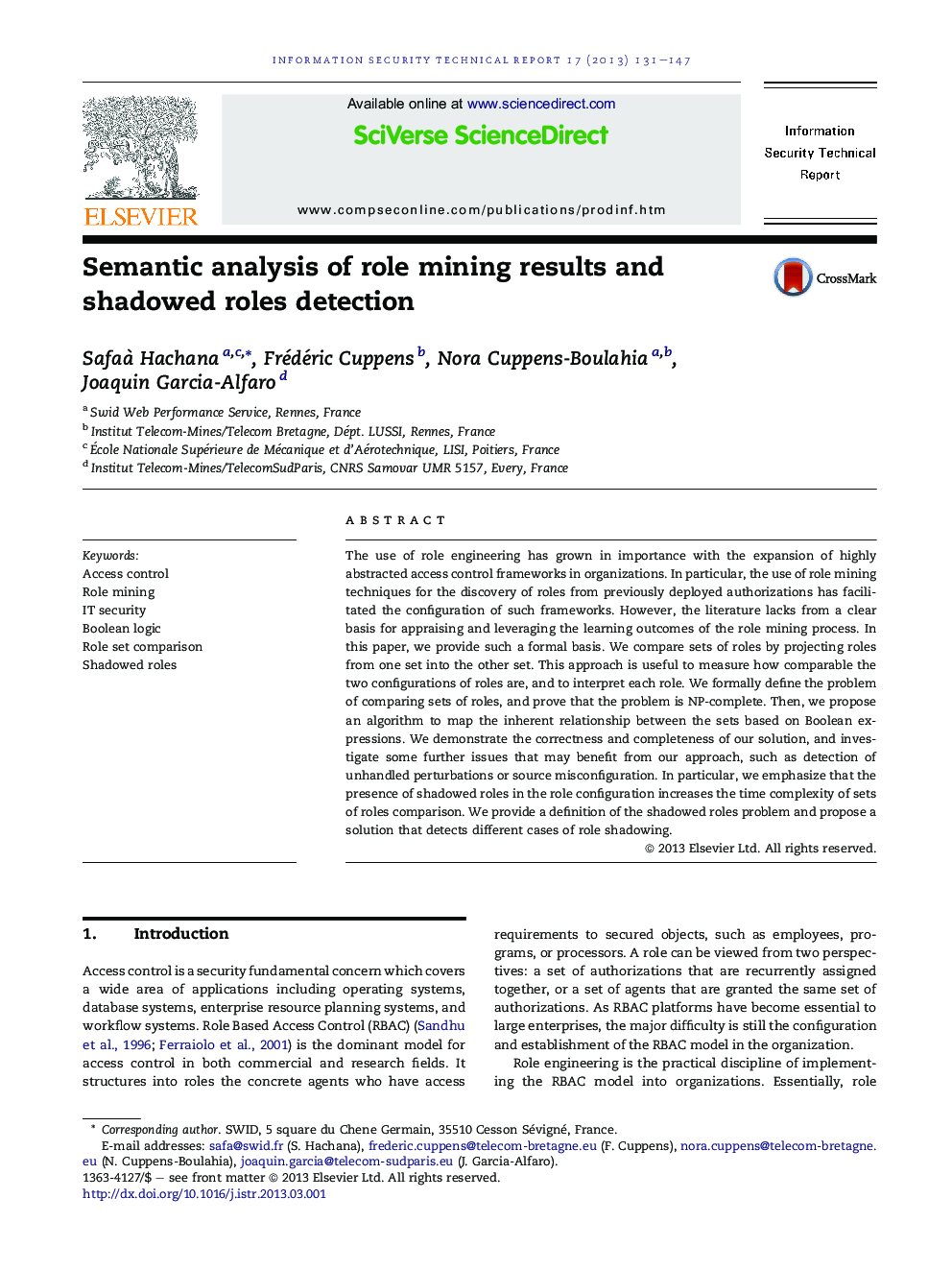| Article ID | Journal | Published Year | Pages | File Type |
|---|---|---|---|---|
| 458111 | Information Security Technical Report | 2013 | 17 Pages |
The use of role engineering has grown in importance with the expansion of highly abstracted access control frameworks in organizations. In particular, the use of role mining techniques for the discovery of roles from previously deployed authorizations has facilitated the configuration of such frameworks. However, the literature lacks from a clear basis for appraising and leveraging the learning outcomes of the role mining process. In this paper, we provide such a formal basis. We compare sets of roles by projecting roles from one set into the other set. This approach is useful to measure how comparable the two configurations of roles are, and to interpret each role. We formally define the problem of comparing sets of roles, and prove that the problem is NP-complete. Then, we propose an algorithm to map the inherent relationship between the sets based on Boolean expressions. We demonstrate the correctness and completeness of our solution, and investigate some further issues that may benefit from our approach, such as detection of unhandled perturbations or source misconfiguration. In particular, we emphasize that the presence of shadowed roles in the role configuration increases the time complexity of sets of roles comparison. We provide a definition of the shadowed roles problem and propose a solution that detects different cases of role shadowing.
